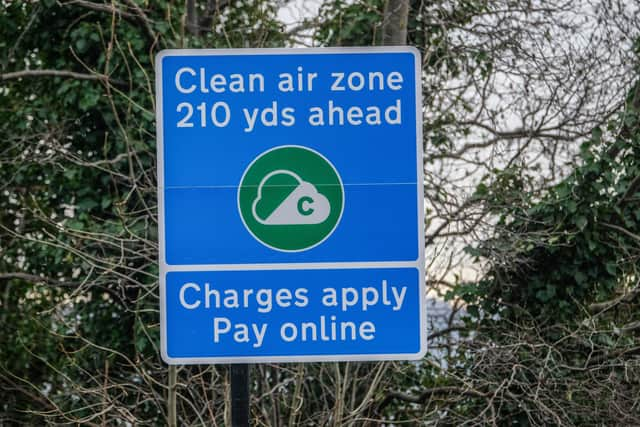Clean Air Zones: What are they, how do they work and where are they in Yorkshire?
But the bid to cut emissions across cities in Yorkshire has also seen two clean air zones introduced in God’s Own County. So, here’s everything you need to know about the controversial clean air zones.
What are clean air zones (CAZs)?
Urban areas where a local authority has introduced measures aimed at boosting air quality.


Where are they?
Advertisement
Hide AdAdvertisement
Hide AdAs well as in Bradford and Sheffield, in England there are CAZs in Bath, Birmingham, Bristol, Portsmouth and Tyneside.
Are there similar schemes elsewhere?
London has an ultra low emission zone (Ulez), Glasgow has a low emission zone and Oxford has a zero emission zone.
How do CAZs operate?
Some have charges for vehicles that do not comply with minimum emissions standards, while others use measures for improving air quality such as retrofitting certain vehicles or rerouting traffic.
What cars comply with the standards?
Generally petrol models registered from 2006 and diesel models registered from September 2015.
What are some examples of charges?
Advertisement
Hide AdAdvertisement
Hide AdIn Bradford, charges start from £7 but go as high as £50 for HGVs, while in Sheffield it starts at £10 but can also go up to £50. In London, non-compliant cars are charged £12.50 a day, while in Birmingham the daily charge is £8.
Do the schemes work?
A report published by the Mayor of London in February claimed the previous expansion of the Ulez - to the North and South Circular Roads in October 2021 - had a "significant impact" in reducing the number of older, more polluting vehicles used in that area and cutting "harmful air pollution".
It stated that since 2019, emissions of nitrogen oxides from road traffic in London are estimated to be 23% lower than they would have been with the Ulez.
Independent studies have also found a drop in levels of nitrogen dioxide in the Ulez area since its introduction though differ in saying by how much emissions fell - between 6% and 19%.
How much money do they make?
Advertisement
Hide AdAdvertisement
Hide AdRAC analysis of TfL figures found the expansion of London's Ulez generated an estimated £93.6 million of additional revenue from drivers in the first eight months.
TfL said the Ulez is "not about making money, but about improving the health and wellbeing of millions of Londoners".
It added that all money received is "reinvested into walking, cycling and public transport".